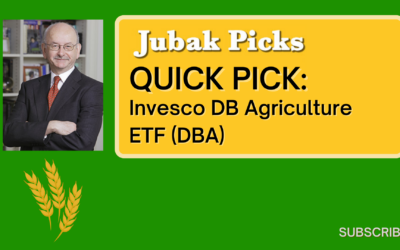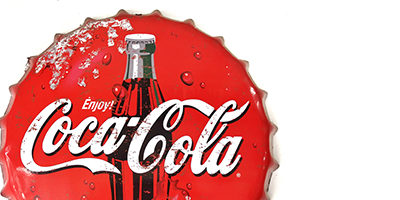%
Jubak’s Picks Performance 1997-2019
Jubak’s Picks
Buy and hold? Not really.
Short-term trading?
Not by a long shot.
So what is the stock-picking style of The Jubak’s Picks portfolio?
Click to expand...
Click to View the Jubak’s Picks Portfolio
I try to go with the market’s momentum when the trend is strong and the risk isn’t too high, and I go against the herd when the bulls have turned piggy and the bears have lost all perspective. What are the results of this moderately active — the holding period is 12 to 18 months — all-stock portfolio since inception in May 1997? A total return of 584% as of December 31, 2019. That compares to a total return on the S&P 500 stock index of 335% during the same period.
%
Top 50 Stocks Performance 2019
Top 50 Stocks
This long-term, buy-and-holdish portfolio was originally based on my 2008 book The Jubak Picks.
Trends that are strong enough, global enough, and long-lasting enough to surpass stock market averages.
Click to expand...
Click to view the Top 50 Stocks Portfolio
In The Jubak’s Picks Portfolio I identified ten trends that were strong enough, global enough, and long-lasting enough to give anyone who invested in them a good chance of beating the stock market averages.
To mark the publication of my new book on volatility, Juggling with Knives, and to bring the existing long-term picks portfolio into line with what I learned in writing that book and my best new ideas on how to invest for the long-term in a period of high volatility, I’m completely overhauling the existing Top 50 Picks portfolio.
You can buy Juggling with Knives at bit.ly/jugglingwithknives
%
Dividend Income Performance 2021
Dividend Income
Every income investor needs a healthy dose of dividend stocks.
Why bother?
Why not just concentrate on bonds or CDs?
Click to expand...
Click to view the Dividend Income Portfolio
Because all the different income-producing assets available to income investors have characteristics that make them suited to one market and not another. You need all of these types of assets if you’re going to generate maximum income with minimum risk as the market twists and turns.
For example: bonds are great when interest rates are falling. Buy early in that kind of market and you can just sit back and collect that initial high yield as well as the capital gains that are generated as the bonds appreciate in price with each drop in interest rates.
CDs, on the other hand, are a great way to lock in a yield with almost absolute safety when you’d like to avoid the risk of having to reinvest in an uncertain market or when interest rates are crashing.
Dividend stocks have one very special characteristic that sets them apart from bonds and CDs: companies raise dividends over time. Some companies raise them significantly from one quarter or year to the next. That makes a dividend-paying stock one of the best sources of income when interest rates start to rise.
Bonds will get killed in that environment because bond prices will fall so that yields on existing bonds keep pace with rising interest rates.
But because interest rates usually go up during periods when the economy is cooking, there’s a very good chance that the company you own will be seeing rising profits. And that it will raise its dividend payout to share some of that with shareholders.
With a dividend stock you’ve got a chance that the yield you’re collecting will keep up with rising market interest rates.
But wouldn’t ya know it?
Just when dividend investing is getting to be more important—becoming in my opinion the key stock market strategy for the current market environment—it’s also getting to be more difficult to execute with shifting tax rates and special dividends distorting the reported yield on many stocks.
I think there’s really only one real choice—investors have to pull up their socks and work even harder at their dividend investing strategy. That’s why I revamped the format of the Dividend Income portfolio that I’ve been running since October 2009. The changes aren’t to the basic strategy. That’s worked well, I think, and I’ll give you some numbers later on so you can judge for yourself. No, the changes are designed to do two things: First, to let you and me track the performance of the portfolio more comprehensively and more easily compare it to the performance turned in by other strategies, and second, to generate a bigger and more frequent roster of dividend picks so that readers, especially readers who suddenly have a need to put more money to work in a dividend strategy, have more dividend choices to work with.
Why is dividend investing so important in this environment? I’ve laid out the reasons elsewhere but let me recapitulate here. Volatility will create repeated opportunities to capture yields of 5%–the “new normal” and “paranormal” target rate of return–or more as stock prices fall in the latest panic. By using that 5% dividend yield as a target for buys (and sells) dividend investors will avoid the worst of buying high (yields won’t justify the buy) and selling low (yields will argue that this is a time to buy.) And unlike bond payouts, which are fixed by coupon, stock dividends can rise with time, giving investors some protection against inflation.
The challenge in dividend investing during this period is using dividend yield as a guide to buying and selling without becoming totally and exclusively focused on yield. What continues to matter most is total return. A 5% yield can get wiped out very easily by a relatively small drop in share price.
Going forward, I will continue to report on the cash thrown off by the portfolio—since I recognize that many investors are looking for ways to increase their current cash incomes. But I’m also going to report the total return on the portfolio—so you can compare this performance to other alternatives—and I’m going to assume that an investor will reinvest the cash from these dividend stocks back into other dividend stocks. That will give the portfolio—and investors who follow it—the advantage of compounding over time, one of the biggest strengths in any dividend income strategy.
What are some of the numbers on this portfolio? $29,477 in dividends received from October 2009 through December 31, 2013. On the original $100,000 investment in October 2009 that comes to a 29.5% payout on that initial investment over a period of 39 months. That’s a compound annual growth rate of 8.27%.
And since we care about total return, how about capital gains or losses from the portfolio? The total equity price value of the portfolio came to $119,958 on December 31, 2012. That’s a gain of $19,958 over 39 months on that initial $100,000 investment or a compound annual growth rate of 5.76%.
The total return on the portfolio for that period comes to $49,435 or a compound annual growth rate of 13.2%.
How does that compare to the total return on the Standard & Poor’s 500 Stock Index for that 39-month period? In that period $100,000 invested in the S&P 500 would have grown to $141,468 with price appreciation and dividends included.) That’s a total compounded annual rate of return of 11.26%.
That’s an annual 2 percentage point advantage to my Dividend Income portfolio. That’s significant, I’d argue, in the context of a low risk strategy.
Portfolio Related Posts
Please watch my new YouTube video: Quick Pick Invesco Agriculture ETF
My one-hundredth-and-thirty-seventh YouTube video “Quick Pick Invesco Agriculture ETF” went up today. My Quick Pick this week is the Invesco DB Agriculture ETF. If you follow me my JubakPicks.com and JubakAm.com sites, you’ll know I’ve been looking for good vehicles to ride the increases in commodity prices due to inflation and the war in Ukraine. I’m switching in this ETF to replace commodity ETNs managed by Barclays currently in my portfolio because of some really bone-head mistakes by Barclays that have increased volatility in an already volatile asset. I don’t need more volatility, thanks!
My candidates for gains tomorrow after some of today’s more mindless selling? Coke and Pepsi
Ok, the bad news on profit margins from Target (TGT) was a big deal. No argument. When you’re operating margin falls to 5.37% when Wall Street was projecting 9.5%, it’s a big deal. And after yesterday’s earnings miss from Walmart (WMT), it’s reasonable to extrapolate and say the entire economy and stock market has a cost, inflation, and margin problem. But that doesn’t mean that every company has the same degree of problem. And it certainly doesn’t justify selling everything–and selling to the tune of big losses–shares of every company that sells stuff to consumers. And tomorrow, or the next day, I expect a little more analysis and discrimination in the market. Some of the stocks hit hardest today should rebound handily on that rethink. I’d put PepsiCo (PEP) and Coca-Cola (KO) at the head of that group.
Inflation takes a huge bite out of Target income–and the market worries, big time
As of 3:30 p.m. Wednesday May 18 shares of Target (TGT) were down 25% for the day after the company reported a big earnings miss for the first quarter. Let’s be clear. The sales picture at Target was very positive for the quarter. Same store sales were up 3.3% in the quarter. That was about three times higher than Wall Street analysts had expected. Revenue was up 4%. Here again Target’s $25.2 billion in revenue beat expectations for $24.3 billion in revenue. But earnings were terrible at $2.19 a share versus forecasts for $3.05 a share.
Everything EV was up today on news of soaring new registrations
New registrations for electric vehicles jumped 60% in the first quarter of 2022 from the first quarter of 2021. according to Experian Automotive. Electric vehicles made up an all-time record 4.6% of the total market. The news was even more positive given that overall new vehicle registrations were down 18% in the quarter from the first quarter of 2021.
A day after bad news of an economic slowdown in China, officials talk up China’s Internet giants
Today, Tuesday May 17, China’s top economic official, Vice Premier Liu He, said that the government will support the development of digital economy companies and their public stock listings. The comments delivered after a symposium with the CEOs of some of the country’s largest private technology companies came just a day after the National Bureau of Statistics reported that industrial output fell 2.9% in April from April 2021, and that retail sales contracted 11.1%. Financial markets in China and the United States interpreted the remarks as a public show of support for China’s Internet companies
Today it looks more like a bear market rally
In my weekend Saturday Night Quarterback I said that this week would, probably, answer the question of whether Friday’s big bounce was just a bounce, the start of a buy on the dip rally, or even a bear market rally with a bit of staying power. Two days into the week I think the market action is moving in favor of a bear market rally, one of those often quite powerful upside moves that punctuate extended bear markets.
My 5 sells for Monday morning
I don’t know if Friday’s bounce will continue into the new week. I think the summer season is likely to be positive for revenue at many companies–travel, airlines, Las Vegas–but I don’t like the longer term fundamentals in the economy. Inflation is going to be harder to reduce than Federal Reserve rhetoric and Wall Street sentiment now credit. And there is a good chance of a recession in 2023. But I’m not looking for some kind of crash from here–at least not before a recession tests the credit markets in 2023. We’re on the edge of a bear–the Standard & Poor’s 500 was down 18.1% from its all time high as of the close on Thursday–or in a bear–for the technology stocks of the NASDAQ. The typical pattern from here is for a continued decline to be punctuated by sharp rallies and bounces (like Friday) until we put in the ultimate bottom (certainly after a few more Federal Reserve interest rate increases.)
We’re not there yet. This downward trend in equity markets is likely to continue for a while in my opinion. So what am I trying to accomplish with these sells?
Watch my YouTube video: Quick Pick Middleby
My one-hundredth-and-thirty-fourth YouTube video “Quick Pick Middleby” went up today. My Quick Pick this week is Middleby (MIDD), a manufacturer of restaurant equipment. I’ve been following the company for 20 years, during which time they’ve pursued basically the same slow and steady strategy of acquiring smaller players in their market area (where they are the largest player) and them using Middleby’s marketing leverage to grow sales at the acquisition. The stock took a hit on its recent announcement that it expects to feel the impacts of inflation and supply chain difficulties. It’s difficult to catch a falling knife, but I think this stock is a good buy long term and I am adding it back to my 50 Stocks Portfolio, which has a holding period of 5 plus years.











